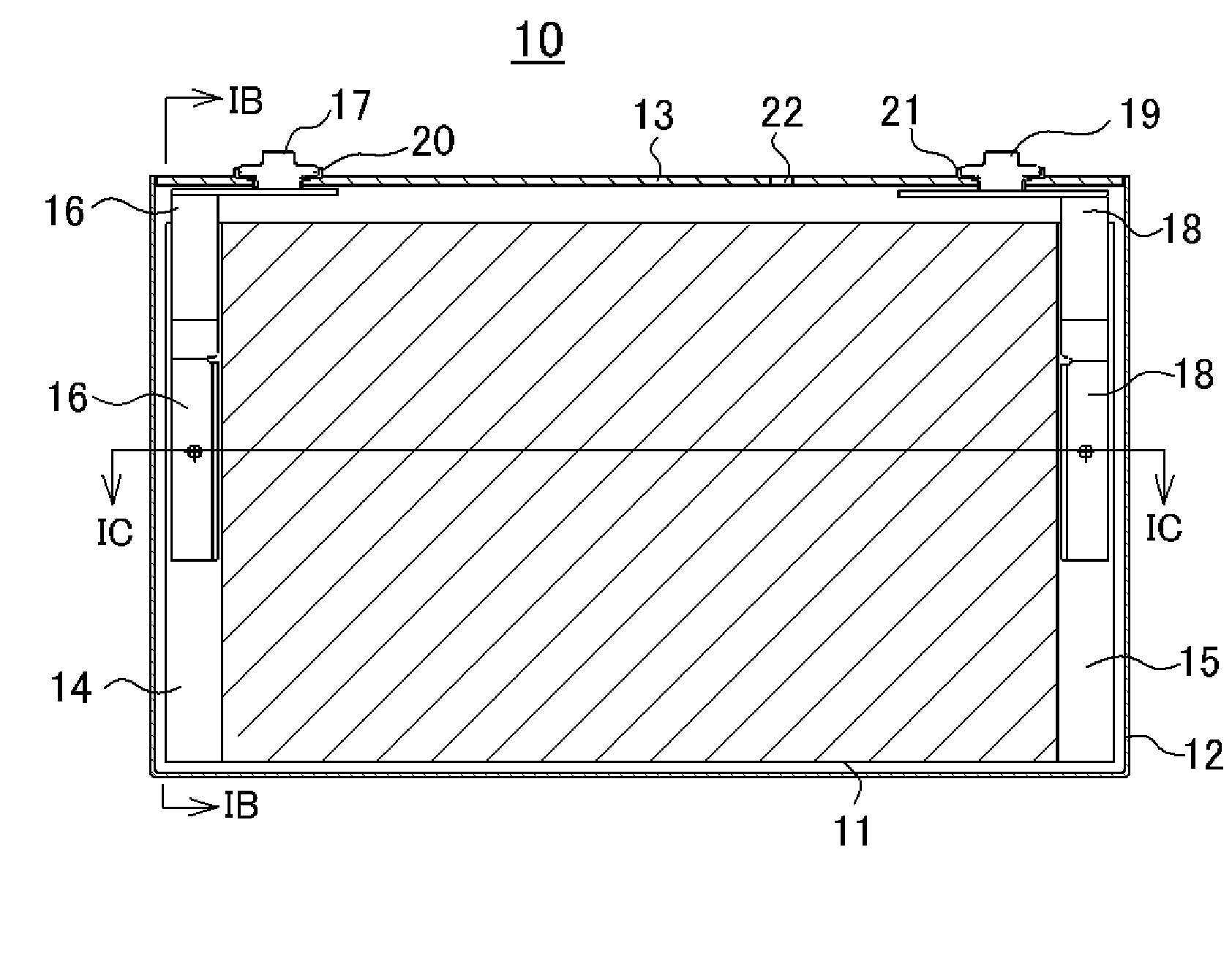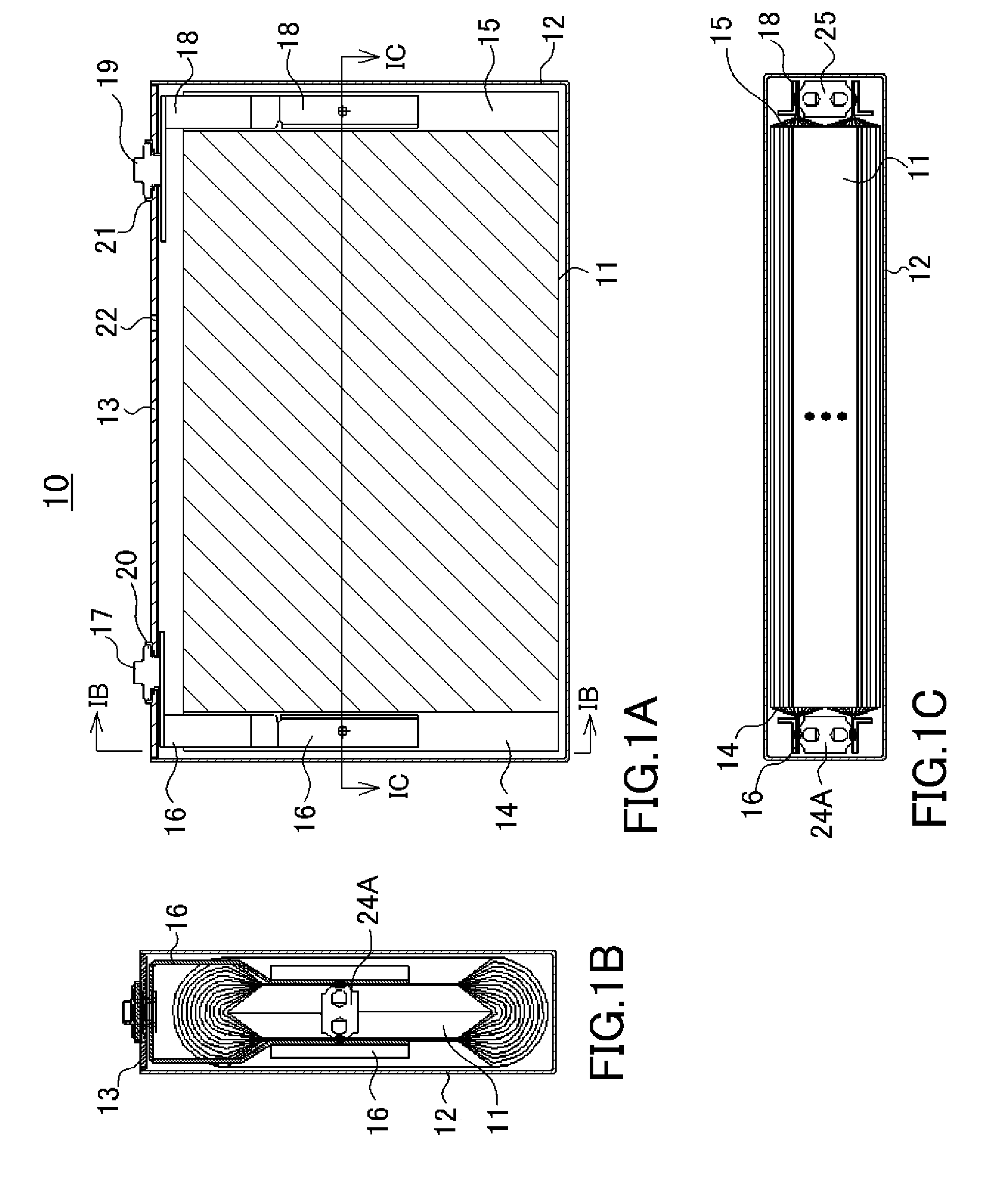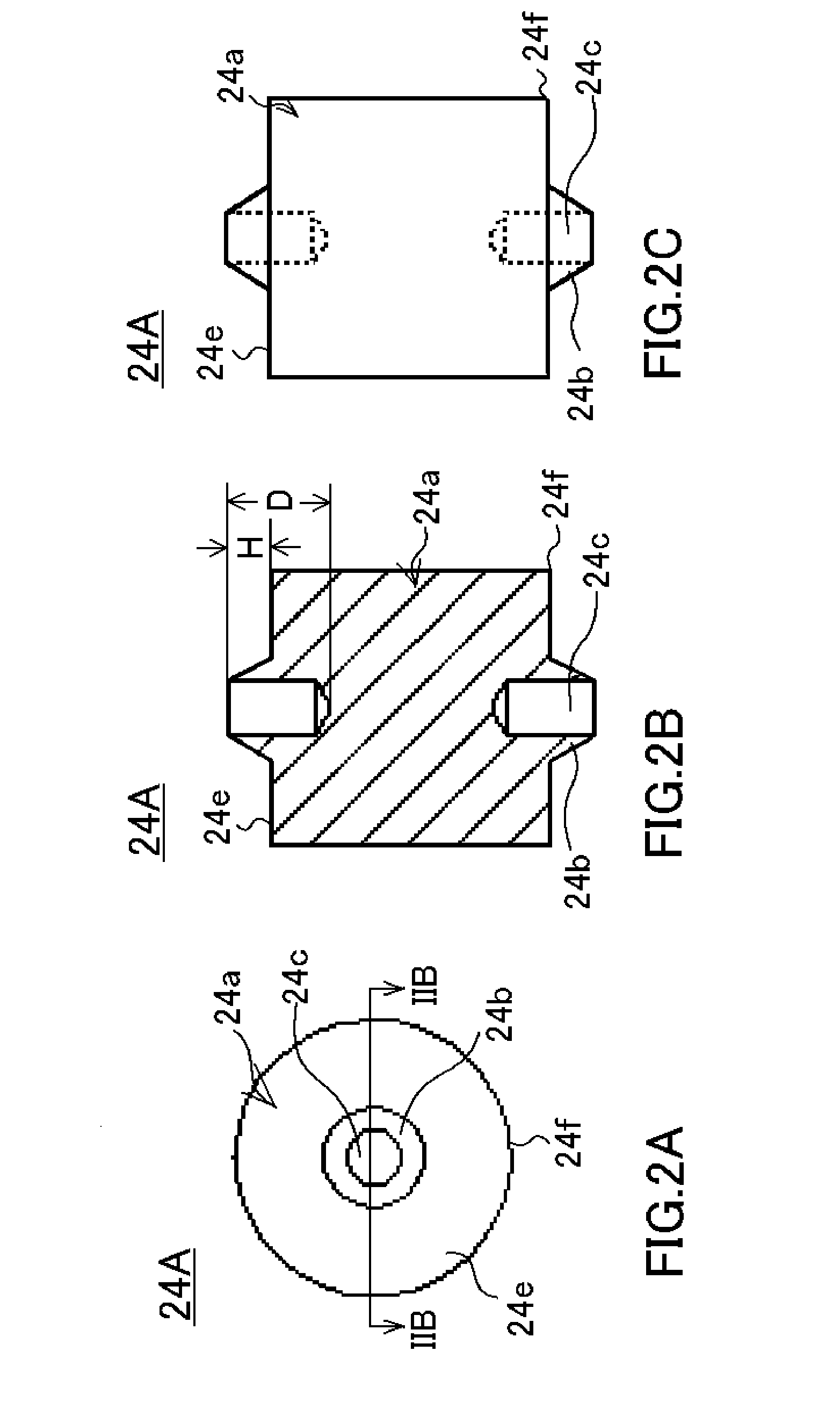Current carrying block for resistance welding, and method for manufacturing sealed battery and sealed battery each using the current carrying block
- Summary
- Abstract
- Description
- Claims
- Application Information
AI Technical Summary
Benefits of technology
Problems solved by technology
Method used
Image
Examples
first embodiment
[0090]First, as an example of the sealed battery of a first embodiment of the present invention, a prismatic nonaqueous electrolyte secondary battery will be described with reference to FIGS. 1A to 1C. FIG. 1A is a cross-sectional view showing the nonaqueous electrolyte secondary battery of the first embodiment, FIG. 1B is a cross-sectional view taken along the line IB-IB of FIG. 1A, and FIG. 1C is a cross-sectional view taken along the line IC-IC of FIG. 1A. The nonaqueous electrolyte secondary battery 10 includes a flat wound electrode assembly 11 in which positive and negative electrode sheets (not shown) are wound with a separator interposed therebetween (not shown).
[0091]The positive electrode sheet is prepared by applying a positive electrode active material mixture on both sides of a positive electrode substrate made of aluminum foil so as to form a positive electrode substrate exposed portion 14 where strip-shaped aluminum foil is exposed, drying the resulting substrate, and...
second embodiment
[0114]The first embodiment has exemplified, as shown in FIGS. 2A to 2C, the current carrying block for the positive electrode 24A in which, for example, the truncated-cone-shaped protrusion 24b is formed on each of the two opposing faces 24e of the column-shaped main body 24a. In this manner, when the main body 24a has a column shape, the column-shaped main body 24a has a corner 24f between each of the two opposing faces 24e and the side face. Consequently, as shown in FIG. 3, when the current carrying block for the positive electrode 24A is placed inside the two-divided stacked positive electrode substrate exposed portions 14 so as to bring each of the truncated-cone-shaped protrusions 24b on the current carrying block for the positive electrode 24A into contact with the stacked positive electrode substrate exposed portions 14, the corner 24f readily comes in contact with the stacked positive electrode substrate exposed portion 14, and thus the positive electrode substrate exposed ...
third embodiment
[0119]The second embodiment has exemplified the current carrying block for the positive electrode 24B in which the chamfered face 24g is formed at the corner 24f between each of the two opposing faces 24e and the side face of the column-shaped main body 24a in the first embodiment as well as the protrusion 24b has no opening. Furthermore, the first embodiment has exemplified the current carrying block for the positive electrode 24A in which the opening 24c formed in the protrusion 24b has a depth D larger than the height H of the protrusion 24b (see FIG. 2B). However, the depth D of the opening 24c formed in the protrusion 24b may be smaller than the height H of the protrusion 24b. The structure of such a current carrying block for the positive electrode 24D of a third embodiment of the present invention is shown in FIG. 6C. FIG. 6C is an elevation view showing the current carrying block for the positive electrode 24D of the third embodiment.
[0120]With the current carrying block for...
PUM
| Property | Measurement | Unit |
|---|---|---|
| Current | aaaaa | aaaaa |
| Pressure | aaaaa | aaaaa |
| Current | aaaaa | aaaaa |
Abstract
Description
Claims
Application Information
 Login to View More
Login to View More - Generate Ideas
- Intellectual Property
- Life Sciences
- Materials
- Tech Scout
- Unparalleled Data Quality
- Higher Quality Content
- 60% Fewer Hallucinations
Browse by: Latest US Patents, China's latest patents, Technical Efficacy Thesaurus, Application Domain, Technology Topic, Popular Technical Reports.
© 2025 PatSnap. All rights reserved.Legal|Privacy policy|Modern Slavery Act Transparency Statement|Sitemap|About US| Contact US: help@patsnap.com



